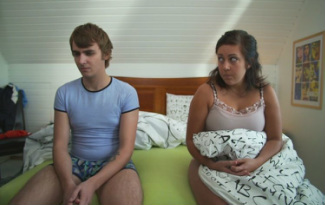Sexing Up the Sex Ed Classroom Revisited
About a year ago, I wrote my first post for Sociology Lens about the tensions over sex education in the United States. Specifically, I commented on Jessica Field’s Sociology Compass article, “Sexuality Education in the United States: Shared Cultural Ideas Across the Political Divide,” in which she argues that, regardless of political position on sex education, most participants in debates operate from a shared assumption about the dangers of adolescent sexuality. Following Fields, I called for a truly comprehensive form of sex education that recognizes confusion, pleasure, and the risks of sexual activity.
Now, a year later as I end my time as a Sociology Lens contributor, I am happy to write that I have finally found a model of sex education that achieves the goals that I set out in that first post. A group in Iceland has created a government-sponsored awareness video that teaches teenagers about issues relevant to their sexual lives: confusion in the bedroom, body differences and issues, protection and contraceptives, emotional responses to sex, and sexual violence (Trigger warning: the video explicitly covers the topic of rape, which may be sensitive for some). In January 2013, all teenagers in Icelandic public schools screened the video.
This video offers a complete approach to sex education. Rather than approaching sex as a dangerous topic (as often is the case in the United States), it starts from the assumption that sex can and should be fun. This means that teenagers should not fret over their bodies (all bodies are different) and should have realistic expectations about sexual activity (real life sex may not look like porn sex or Hollywood sex). Sex is more enjoyable if you communicate with your partner (boy or girl) and set your boundaries. The video does recognize the risks associated with adolescent sexual behavior, including sexually transmitted diseases and pregnancy. However, rather than presenting sexual activity as inherently dangerous, the teenage viewers are reminded to use protection every time. In other words, instead of framing sex as scary, the video acknowledges the risks and gives teenagers concrete ways to deal with the potential problems associated with sexual activity (setting boundaries, communicating with your partner even when it is awkward or confusing, using contraceptives). This is exactly what Fields described in her Sociology Compass article and what I reiterated in my first Sociology Lens piece.
Additionally, the video does a particularly good job of dealing with sexual violence, especially issues around consent. The video reminds teenagers that silence, or the lack of consent, is not actually consent. Your partner should say “yes” to sex. Consent, or “a yes,” is always necessary. By educating students about these issues, they should not be confused about what constitutes sexual violence.
Now, the question is whether or not this type of video would ever be introduced into a U.S. sex education classroom. Most of the debates about sex education are motivated by the fear that adolescents will harm themselves through sexual behavior, a message which is inconsistent with the Icelandic video. Even the most radical supporters of a comprehensive sex education program might be reluctant to use a video that describes sex as fun. What do you think?
Suggested Readings:
Fine, Michelle and Sara McClelland. 2006. “Sexuality Education and Desire: Still Missing After All of These Years.” Harvard Educational Review 76(3): 297.
Tolman, Deborah. 2005. Dilemmas of Desire: Teenage Girls Talk about Sexuality. Cambridge: Harvard University Press.




1540-6237/asset/SSSA_Logo-RGB.jpg?v=1&s=c337bd297fd542da89c4e342754f2e91c5d6302e)
I haven’t managed to watch all of the video yet as (it is quite high quality and my internet is struggling with it) but it seems really excellent, and a refreshing change from much of what I have seen before. It’s kept enough humour and sex appeal to speak to teenagers, and doesn’t patronise with its information which I think is really important.
It will be interesting to see if Iceland have any repercussions regarding the showing of this to all adolescents, some of the problems arise (in the UK at least) when parents are allowed to opt thier children out of the sex education, something I could see happening a lot in the U.S. if this kind of video was shown. It looks as though Iceland has had very positive feedback so far.
I agree with you entirely, sex education needs to be sex-positive, otherwise it is either teaching the wrong message, or it is isolating those teenagers that already have sexual experience and recognise it as fun. Here’s hoping other countries follow suit!